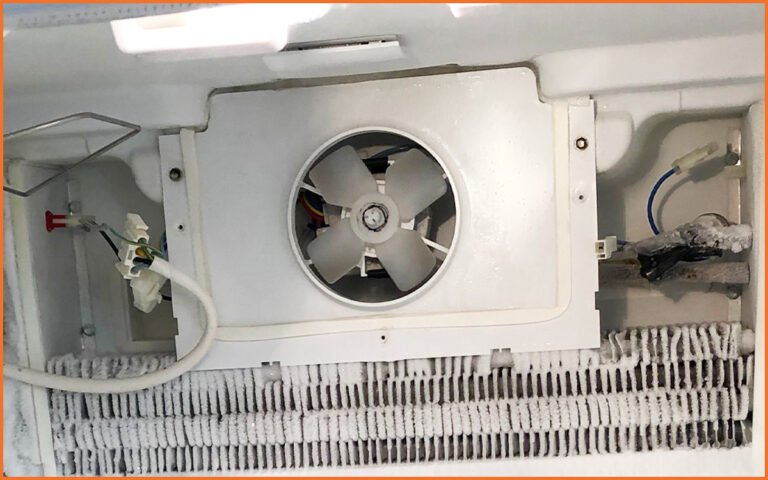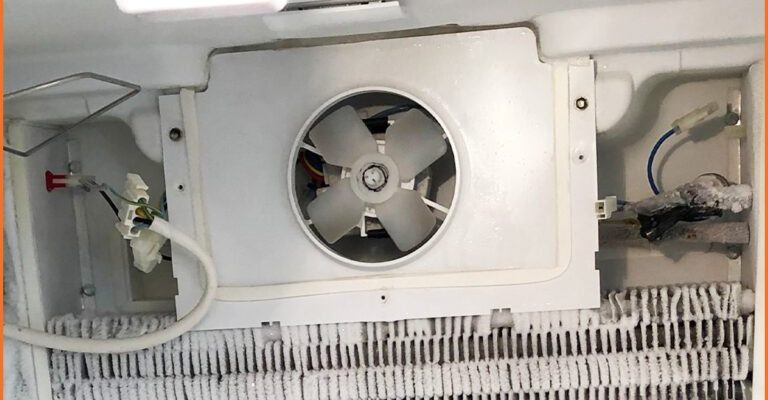
Think of your refrigerator’s defrost system as a vigilant caretaker that keeps frost from building up in your fridge. When the E3 code appears, it’s like your refrigerator saying, “Hey, I’m not defrosting properly!” This little hiccup can lead to bigger issues if not addressed. Imagine a city traffic system breaking down without the traffic lights working; chaos ensues. Similarly, ignoring this error could disrupt your fridge’s ability to maintain the right temperature, potentially spoiling food and leading to higher energy bills. It’s more than just a blinking light or number—it’s your fridge’s SOS that needs attention.
Understanding the E3 Error Code
To grasp the E3 error code, let’s delve into a little more detail about what’s happening inside your fridge. The E3 error typically relates to a failure in the defrost cycle. Think of the defrost cycle like a self-cleaning mode that prevents ice from building up on the refrigerator coils. If these coils are covered in ice, they can’t do their job properly, and your fridge struggles to maintain the coolness.
Imagine trying to drink through a straw that’s partially blocked — that’s how your fridge feels trying to cool when its coils are iced up. The E3 error suggests that something in this cycle is off-kilter. It could be the defrost heater, the defrost sensor, or even the control board that coordinates these components. Any one of these things being out of order can trigger the E3 code.
Ignoring this error is akin to ignoring a leaky faucet. Sure, you might not notice the problem right away, but over time, it worsens. Without proper defrosting, ice accumulation could lead to poor cooling performance, affecting both the longevity of your refrigerator and the freshness of your groceries. So, tackling this issue sooner rather than later can save you from future headaches and expenses.
Effects of Leaving the Error Unresolved
Leaving the E3 error unresolved is like living with a dripping ceiling — it may seem manageable now, but the consequences can be disastrous. First off, if the defrost function isn’t working, the compressor might overwork itself trying to maintain the necessary temperatures. This isn’t just bad for your electricity bill; it can also shorten the lifespan of these critical components.
Furthermore, without properly working defrosting, your refrigerator may not stay as cool as it should, resulting in food spoilage. Think about the frustration of reaching for that ice-cold drink or fresh fruit only to find it’s not as chilled as it should be, or worse, spoilt. This can lead to unnecessary food waste and more frequent trips to the grocery store.
Moreover, neglecting the problem could potentially escalate into more significant repairs or even the need for a new refrigerator. Repair costs for additional issues, like a burnt-out compressor or a failed defrost control board, can add up quickly. Essentially, a small problem that could be fixed might grow into a costly ordeal.
Steps to Take When You Encounter Error E3
So, what should you do if your Samsung refrigerator displays an E3 error? Here’s the deal: start by checking for visible ice build-up in the freezer compartment. Sometimes, a simple manual defrost can resolve the issue. Unplug your refrigerator and let it defrost overnight. This might just do the trick if the error is due to minor ice blockage.
However, if the error persists, it might be time to inspect the defrost heater and thermostat. These are components you may need a professional to check. Consulting with a Samsung-approved technician can ensure a proper diagnosis and fix, preventing further errors down the road.
Finally, for peace of mind and to avoid future issues, consider regular maintenance and cleaning of your refrigerator. Ensure the door seals are not letting warm air in, and keep an eye on any unusual noises or performance hiccups. By staying proactive, you can keep your fridge humming efficiently and keep those pesky error codes at bay.
Preventative Tips to Avoid E3 Error
Prevention, as they say, is better than cure. To keep the E3 error at bay, regular maintenance of your refrigerator is crucial. Think of it like regular check-ups for your car; it helps catch issues before they spiral out of control. Regularly check and clean the door seals to make sure no warm air enters the fridge, leading to unnecessary ice build-up.
It’s also a good idea to give your fridge some breathing room. Ensure it’s not crammed into a tight space which can restrict airflow and cause overheating. Equally, defrosting your freezer periodically can help keep the defrost system from working overtime, reducing the risk of mechanical failure and helping your fridge run smoothly.
Finally, keeping the internal temperature consistent by not leaving the refrigerator door open for extended periods can prevent the system from overworking. By following these proactive measures, you can extend the life of your appliance, minimize the risk of error codes like E3, and keep your fridge operating like a well-oiled machine.
In summary, while the E3 error may seem like a minor inconvenience, it’s crucial to address it promptly to avoid larger issues that can affect your refrigerator’s performance and lifespan. By understanding what causes this error and taking steps to prevent it, you can ensure your Samsung refrigerator remains a reliable fixture in your kitchen for years to come.
